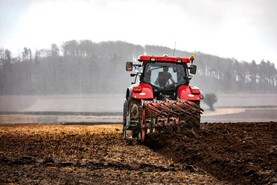We are not alone in our quest to get the message across about farm safety. The HSENI’s approach has been to simplify guidance by moving away from lengthy books to short advisory statements and pictures.
“We find that risk assessment documents are seen to be bureaucratic,” said Brian Monson from the HSENI. “In May of 2012 we formed the farm safety partnership in order to change perceptions and create awareness.”
The HSENI changed their approach to farm advisory visits. Their Slurry, Animals, Falls and Equipment (SAFE) campaign encourages farmers to stop and think safe.
“Farmers, their families and employees should be capable, able and motivated to work safely,” said Monson. “By moving from paper-based to visual safety guides it makes it easier for farmers to understand and remember the safety message. This isn’t just about numbers, it’s about their lives, their family’s lives and the future of their farm.”
From 1968 to 2015, 485 people lost their lives on farms in Northern Ireland. That’s almost the equivalent of the Scottish Parliament, the Welsh National Assembly, the Northern Irish Assembly and the Dail combined.
In the 1960s they had approximately 20 deaths/year but the introduction of the roll bar reduced that figure overnight. However, causes of farm deaths don’t change across all of Ireland. Machinery is the number one factor, followed by falls, animals and slurry respectively.
Facts
This year alone there have been four farm deaths in Northern Ireland and 15 in the Republic. It is estimated that 3,000 serious injuries also occur causing pain, suffering, possibly disability but ultimately can impinge negatively on quality of life.
“Statistics seen in recent times are quite shocking,” said Professor Gerry Boyle, Teagasc. “Good will and effort is clearly not enough in the face of the current challenge. It is important that we engage with students in ag colleges, over the next two years an additional 7,000 people will receive qualifications in agriculture, they are our captive audience.
“Knowledge transfer groups and TAMS measures will provide an incentive base for the new cohort of farmers coming in through the Rural Development Program (RDP).”
Research presented by John McNamara, shows the patterns emerging behind farm fatalities. 11am to 12pm is the most common time of day for accidents to occur. Very few happen before 9am, despite the fact that many farmer’s day begins earlier than that.
Friday is the most common day of the week for accidents, followed by Saturday and Sunday. June and July are the most common months for farm accidents with a considerable number of them also occurring between January and March.
Age is very much associated with accidents. The 55 to 59 age category has the highest number of farm fatalities, while 26% of deaths occur in the over-60 group.






 This is a subscriber-only article
This is a subscriber-only article










SHARING OPTIONS: